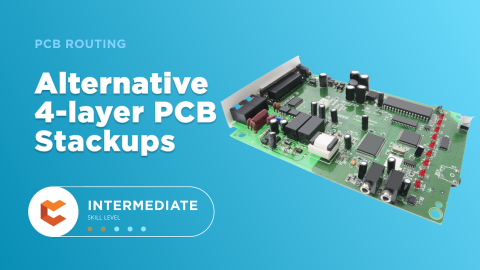How to Find the Best PCB Layout Help for Your Specific Design Questions
Have you ever heard stories about the gamblers in the Wild West pulling an ace out of their sleeve in order to cash in with the winning hand? Even though it’s not the most moral example I’ve ever used, the principle here is still a good one. Always make sure that you have something in your pocket that you can draw from when you need it. And this is just as important for us as designers as it is in everyday life.
At some point, everyone needs help with either a design, a CAD tool function, or a manufacturing query. It’s easy to get swept away by problems, but that doesn’t have to be the case. There are helpful resources both online and offline that designers can keep in their pocket to draw from. Here are some of the ways successful designers accomplish this.
Communicate with your colleagues
This one might seem obvious, but we sometimes forget how much valuable experience our colleagues have. It’s also important to remember that there is no shame in asking for help. This is especially true if you have a network of professional associates with a wealth of design experience. I learned a long time ago to put my pride behind me since it did nothing but get in the way when I was trying to resolve a problem. Since then I have steadily added to my network of professional associates who I go to when I am stuck on a problem. I am also not afraid to go to my friends, family, and other non-professional associates for help as well. Sometimes the solution to a problem can be staring us in the face, only we are too close to see it. My spouse, who doesn’t know a thing about laying out a PCB design, has at times helped me through a design related problem simply by listening to me patiently and then pointing out errors in my thinking.
To make a long story short, if you need help, ask for it.
Give your colleagues a call when you’re questioning your circuit layout.
Information Is Out There
If you’re reading this article then you already know that the world wide web is an excellent source for finding answers to your design questions. The trick is doing this effectively so that you get the answers that you’re searching for. Here are some tips:
Use specific search terms: Regardless of whether you’re dipping your toe into PCB design or if you’ve been doing this for decades, there’s a good chance that someone else out there has had the same problem. Ideally, they’ll also have shared it online. By specifying your design issue you’ll find information that is targeted to that particular problem and will expedite your ability to solve it.
Think critically about sources: The abundance of information online can be both a blessing and a curse. There are so many types of resources to pick from it’s hard to know which will be the most effective.
-
Web forums. Web forums are often a helpful resource for tackling specific design problems, but they are also a great forum for debate. While it is good to look at a problem from every angle, you will encounter biased information. This can be the result of each forum member having their own unique design experience and from working with different PCB design tools. Bottom line is, you can get what you need from forums but you might have to do some digging.
-
Blog articles and FAQs. At the risk of getting too meta, I won’t dig into this one much, but blog articles and FAQs hosted on professional sites are a good resource for getting started. They’re designed to get you on the right path to finding a solution to your design query and ideally will direct you to more detailed information. Most importantly, they are reviewed prior to being published to ensure credibility.
-
White papers. White papers are definitely the most thorough of the resources in this list. Depending on your design query they could be overkill or they could be a perfect fit. They do take more concentration to dig into, so ideally you’ll have come across them from a blog article or a reference that indicates that they are worth focusing on and will answer your question.
A final best practice is to stay up-to-date with subscriptions to design periodicals whether they are online or hard copy. You might already have the answer to your question tucked away in your inbox.
If you have access to CAD support, use it.
If you have access to CAD support – use it
Lastly, be sure to acquaint yourself with the support services offered by your CAD vendor. Whether web-based, E-mail, or phone support, the company that provides your CAD tools wants you to be successful. Depending on your design needs, software for PCB design sometimes has live support. What this means is, you can opt into being connected with their wider user community. For example, Altium Live gives you access to software updates, design templates, forums, videos, high-quality customer support and more.
Never underestimate the value of customer support. I’ve seen the most perplexing of problems that potentially could have ruined a design get solved in a matter of minutes simply by involving the customer support department.
There are many ways that you can get help with your design and with your CAD tools, and we’ve talked about a few of them here. You just need to be prepared beforehand so that you aren’t taken by surprise. Then the next time a problem throws you up against a wall, take a deep breath and reach into your pocket for that hidden ace. You will be really glad that you did.
When you need to access an easy-to-use PCB layout tool that includes everything needed to build high-quality manufacturable circuit boards, look no further than CircuitMaker. In addition to easy-to-use PCB design software, all CircuitMaker users have access to a personal workspace on the Altium 365 platform. You can upload and store your design data in the cloud, and you can easily view your projects via your web browser in a secure platform.
Start using CircuitMaker today and stay tuned for the new CircuitMaker Pro from Altium.











 Back
Back

